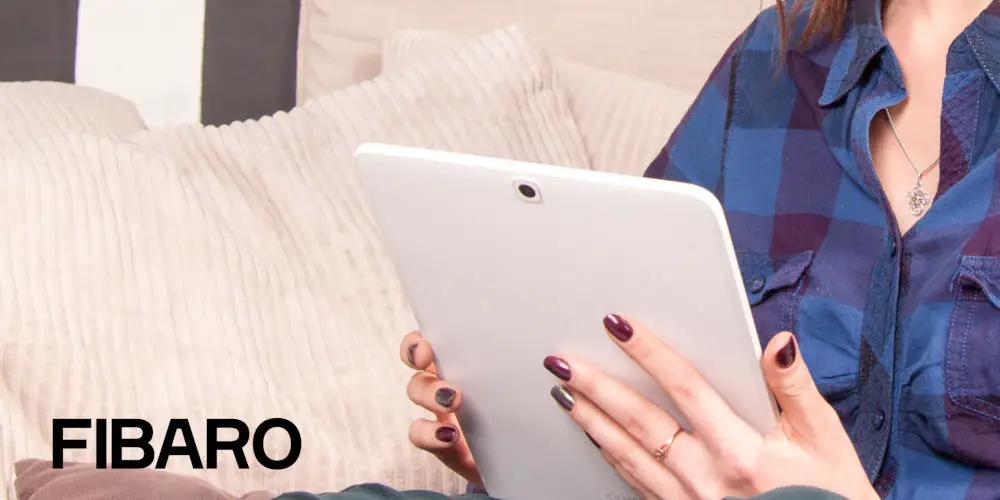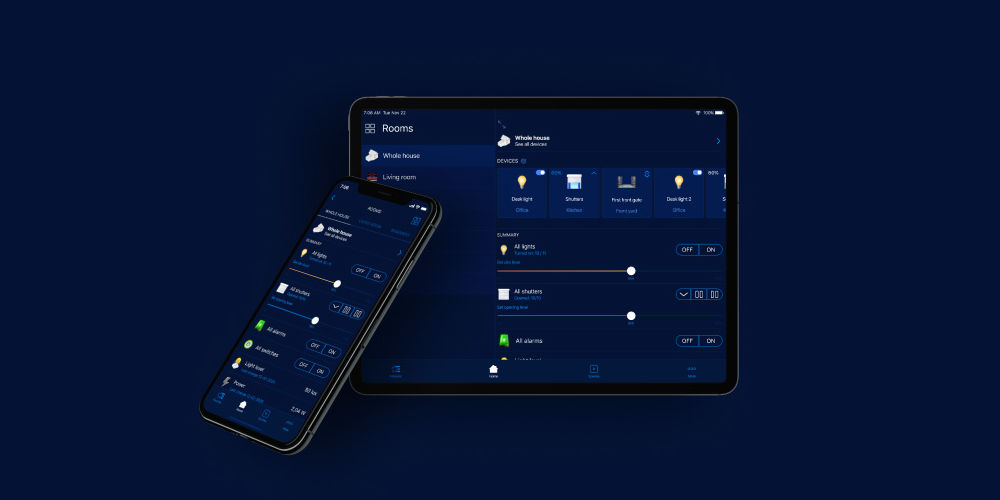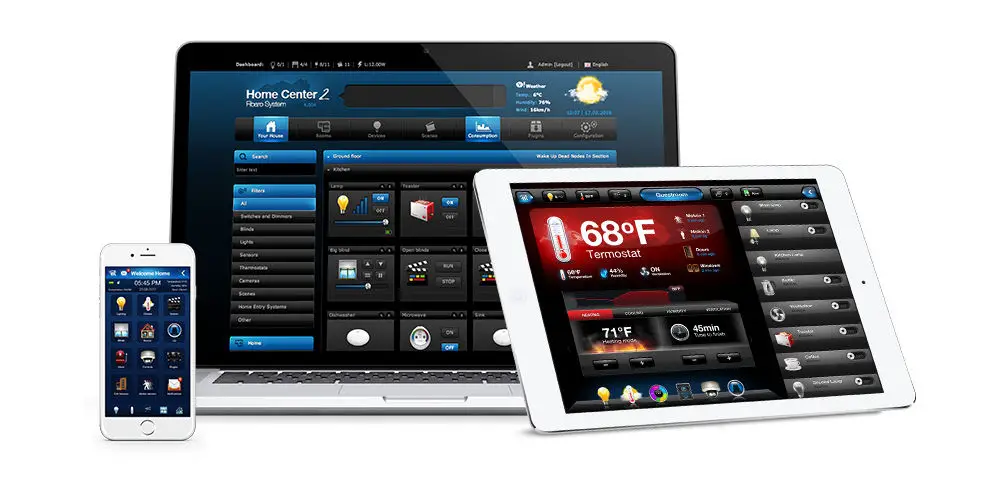Can I create a Fibaro touch screen using a tablet?

An element that makes Crestron, Control4 and other high-end home automation systems very cool is their touch panels. Sadly, no DIY-friendly smart home systems offer a branded touch panel. But there is a solution that will enable you to create a Fibaro touch screen using a tablet.
As big fans of Fibaro, being able to wall mount a tablet and use it as the central control is an exciting idea. Just imagine, being able to control your smart home system from a touch panel in your hallway, you’d never need to reach for your phone again!
Thankfully the Fibaro app has a wall mode, making it very easy to create a Fibaro touch screen without too much effort. Let’s explore how to add a touch screen or two to your home and take your smart home system to the next level!
Why can’t I use Swipe?
While the Fibaro Swipe does look like a tablet that could allow you control over your system, it is a gesture control device and photo frame. You can preset it to respond to several different motions.
For example, swiping up will raise your blinds or moving your hand in a circle will turn up the heating. It can also respond to a sequence of movements, allowing you to control multiple devices in quick succession.
Swipe is a very cool device that allows you instant access to multiple functions without using an app or Alexa/Google Assistant. However, it only deals with preset motions and outcomes. There is no way to manipulate the system. Hence, the need to install the Fibaro app on a tablet or phone.
What benefits will I get from having a dedicated Fibaro tablet?
Most of the time, controlling Fibaro requires you to use a device. It could be the app, Alexa or Swipe. You might prefer not to be chained to your smartphone or need to have an Alexa device in each room.
By having a dedicated tablet on a stand in your living room or mounted to a wall in your hallway, you can easily control your system from a central point and have more flexibility than using voice commands or another control option.
Another benefit of using a tablet is you’re able to view more options from a single screen. Your phone is fantastic for controlling your Fibaro system but it can be too small when trying to programme complex automations or presets.
Finally, with a dedicated tablet, you can encourage your family and guest to embrace the magic of home automation and see how easy it is to use. Smart home technology is fun to use and life changing.

photo by Fibaro
Can I still my phone or voice assistant?
After creating a Fibaro touch screen using a cheap tablet, you can still the app on your phone or a voice assistant. Each offers a different level of control and has its own purpose. It’s the same for devices like the Fibaro Swipe, Heatit Z-push and Fibaro KeyFob.
Voice assistants are superb for quickly adjusting a feature, activating a preset or controlling a device. However, they aren’t designed to allow you to build new presets, modify existing ones or control multiple devices at once.
To complete a more complex action, including programming your system, you need to use either the app on your phone or tablet or the web portal.
Again each control option does something different and are helpful in certain situations. Having multiple control options allows you flexible control regardless of what you’re trying to achieve.
What is the best tablet for the job?
The Fibaro app works with most Android tablets and iPads. So, you have a wide range of options to choose from. We’d suggest sticking with an affordable tablet, then paying a lot for an iPad and only using it for a single function.
While the Amazon Fire tablets might seem highly affordable and so be ideal, they don’t have access to the Google play store, which is essential for downloading the Fibaro app.
Thankfully, there are plenty of other options, including the Lenovo Tab M10 10.1″ HD tablet, Samsung Galaxy Tab A7 Lite 8.7″ tablet, Lenovo Smart Tab M8 8″ HD tablet (with smart stand) and Samsung Galaxy Tab A8 10.5″ tablet. All are highly affordable and ideal for controlling your smart home system.
Should I wall mount my tablet?
Unless you plan to use your tablet for several functions, it’s worth wall mounting it in a central place, such as your hallway. Another option is to use a tablet stand on your coffee table. In both cases, it’s worth considering how you will get power to your tablet.
A solution is to create a DIY frame from wood or metal that screws into the wall and holds the tablet in place. If you don’t fancy this option, there are plenty of other solutions.
You could use the Koala Tablet Wall Mount by Dockem. It consists of two brackets and adhesive pads, which easily attach to any wall without drilling or nails.
For a more heavy duty approach, the click4av TAW97L01W Tablet Wall Mount might be ideal. As an anti-theft display case, it bolts to the wall and allows you to hide any cables, resulting in a modern, sleek finish.
If you’d prefer to leave your tablet on the side, we can suggest two options. The first is the AYADA Lazy Kitchen Tablet Wall Arm Holder Stand. It doubles as both an adjustable wall mount and a stand.
Another option with a more modern design is the portable UGREEN Tablet Stand. It blends a minimalistic design with a silicone anti-slip pad and 0-100 degree angle adjustment. Not to mention, it’s highly affordable!

photo by Fibaro
How best to power your Fibaro tablet
It doesn’t matter if you wall mount your tablet or use a stand, you will want to ensure it always has power to ensure you can always use your Fibaro touch screen. And while you can use the battery and plug it in once a day to charge, it’s best to leave it plugged into the mains at all times.
Of course, having a tablet always plugged into the mains will increase your bills slightly, but it will be worth it and make operating your Fibaro system even easier. We’d advise the same for Swipe as no one wants to be changing batteries when a device can be mains powered.
That’s how to create a Fibaro touch screen
Creating a Fibaro touch screen is easier than you might think. You need an Android tablet or an iPad. Next, install the Fibaro app on your device and attach it to the wall. The final step is the most difficult, you need to educate your family to use your Fibaro touch screen!
Having a tablet fixed to the wall with the Fibaro app will make controlling your smart home system far easier and enjoyable.




